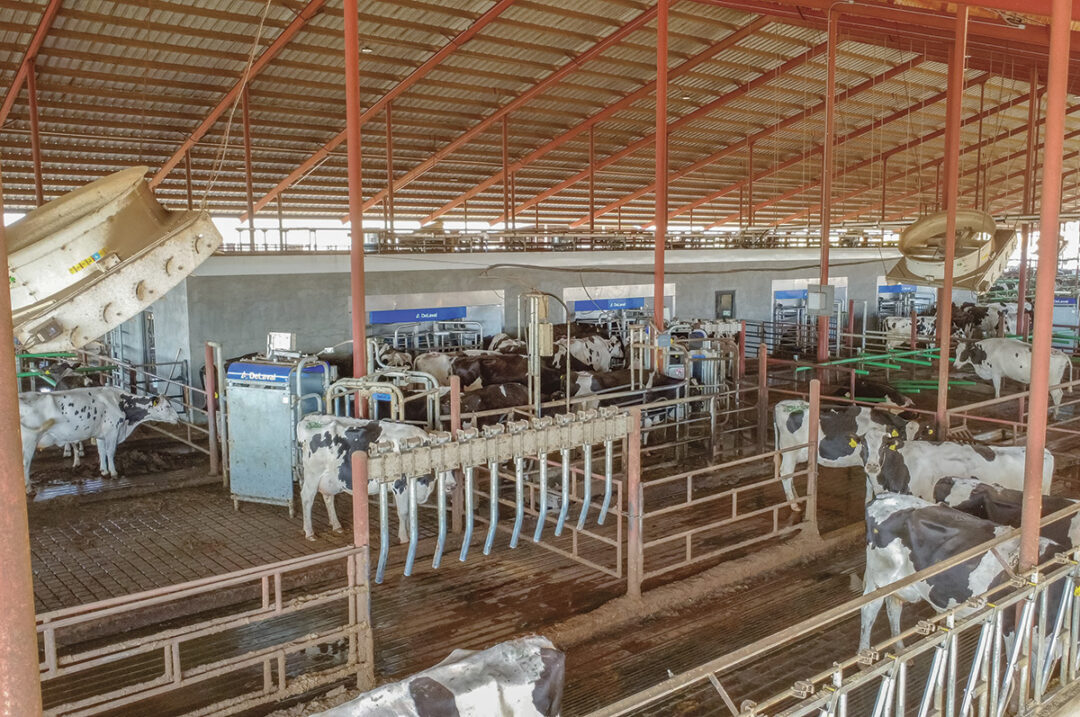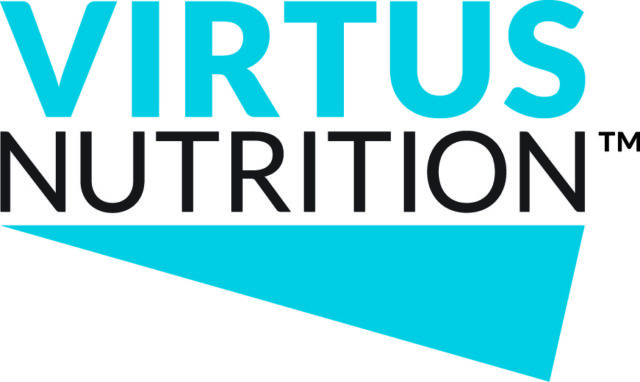Milking technologies have changed over many decades; so have feeding strategies incorporated on the dairy farm. For those using automation to milk cows, providing feed at the robot was thought to be paramount to the system’s success. Recently, some automated milking producers have started to rethink this approach.
A look back at feeding strategies on dairies
The introduction of a total mixed ration (TMR) being fed at the bunk brought a more uniform ration to the cow compared to the past traditional way of component feeding. Additionally, TMR enabled dairy producers to draw upon a wider variety of feedstuffs to meet the nutritional needs of their cows in a more consistent manner. Individual feeding on the rotary and in the parlor was thought to ensure that cows were comfortable while being milked and a way of top-dressing the cow’s ration. By feeding the cow in the rotary or parlor, they also were kept occupied and standing still during the milking process. This feeding concept eventually disappeared to make the system simpler and more cost-effective as we learned that cows just like to be milked.
Fast-forward to today, and history is now repeating itself. Do cows really need to have feed in the milking robot to stay comfortable while the robot arm works through the milking process?
One producer’s hunch
With a combined elevated level of cow behavior experience and a strong understanding of the overall automated milking system, one California dairy farmer and his herd adviser leaned into a hunch and decided to try eliminating feed in his robots. Producer Matt Strickland and adviser Kelli Hutchings put their thoughts and experiences together and collaborated with the farm’s nutritionist to gradually remove the pellets from the robot. Over approximately a two-year process, the farm eliminated pellets in Strickland’s eight-robot, 500-cow facility. They discovered no major change in kick-offs, incompletes or visits to the robot – and milk production increased, which helped validate their decision to move away from feed in the robot.
Other farms across the U.S. and Canada have begun starting up new milking robot facilities with no feed in the robot and are having similar success. In addition to saving on pellet costs, these farms are aiming to make the robotic milking experience more efficient. Just like in a conventional milking system, the cows’ complete nutritional needs would be met by the TMR.
Producers adopting this management strategy are seeing the following benefits:
- There is no need to have to manage an additional feed ingredient inventory.
- The use of complex feeding tables with the robot software system has been eliminated.
- Producers can feed their robot cows the same consistent TMR they feed in their conventional parlors.
- A reduction in feed waste, or shrink, means fewer rodents being drawn to the robot by stray feed and potentially wreaking havoc.
These farms were looking for all the above benefits as well as providing a calm environment for the cows to be milked.
With each farm using a guided-flow system, the producers discovered that with proper training of the cows to the robots, the cows coming into the commitment pen were heading to the feedbunk. Ultimately, she visited the robot knowing her end destination. The feed in the robot was not the driver to her visits to the robot; the robot was just a stop along the way to get to where she was going, which was the TMR at the feedbunk.
Factors for success
Eliminating feed at the robot is an intriguing concept, but it requires preparation and commitment to do it effectively. Here are the main factors a farm should consider:
- Guided traffic – The barn should be set up as a guided-flow system to ensure cows are going to the robots based on the milking permissions that they are assigned. Pre-selection gates ensure that the cows arrive in the robot area and are getting milked at the appropriate time based on stage of lactation and production.
- Cow training protocol – New cows entering the robot facility (fresh heifers and cows that have previously been fed in robots) should be enrolled into a training program where the operator brings the cow to the commitment pen and through the robot at a minimum of three times a day for three to six milkings, or until the cow is comfortable doing this routine on her own. After this, the cows should be monitored closely for an additional three to five days to ensure they understand the gates and how to flow through the barn.
- Feed quality in the TMR – While the quality of feed is important on any dairy facility, it is critical to have a well-balanced, nutrient-dense TMR available to the cows in a no-feed robotic operation. The TMR is used to encourage the cows to go to the bunk. Her desire to go to the feedbunk is what will drive her to voluntarily go through the robots and get milked. The feed consultants and farm’s decision-makers must align on the plan to make high-quality and nutritionally balanced forages for the TMR.
- Farm commitment – The farm, their staff and consultants must be fully committed to all the protocols and procedures that need to be implemented to ensure this feed management strategy will be organized and well executed. The farm must be committed to training cows to navigate the facility voluntarily, which may require fetching cows during certain times of the day, adjusting feed delivery times to increase cow flow through the barn and strategically planning daily routines in the barn to limit the amount of disruption to the cows.
Every farm is different and makes their automated milking operation work for them and their cows. Some have found that cows will adapt to having no feed in the robot, just like they did decades ago in rotaries and parlors. This begs the question: Which status quo management strategy will dairy producers reverse next?













